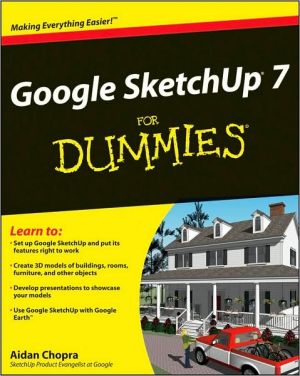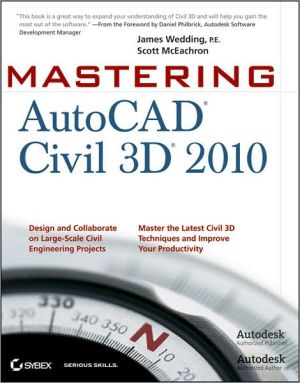Using Visual Basic with AutoCAD 2000
Now in an all-new second edition, Using Visual Basic with AutoCAD continues to encourage readers to explore the customization power they can unleash using Visual Basic to automate AutoCAD 2000. Over 500 pages - featuring a wealth of step-by-step examples presented in the book and on the companion CD-ROM - offer expert instruction in using both Visual Basic for Applications (VBA) and stand-alone Visual Basic (VB). Ideal for programmers of all abilities;, from the novice through the expert,...
Search in google:
Now in an all-new second edition, Using Visual Basic with AutoCAD continues to encourage readers to explore the customization power they can unleash using Visual Basic to automate AutoCAD 2000. Over 500 pages - featuring a wealth of step-by-step examples presented in the book and on the companion CD-ROM - offer expert instruction in using both Visual Basic for Applications (VBA) and stand-alone Visual Basic (VB). Ideal for programmers of all abilities;, from the novice through the expert, Using Visual Basic with AutoCAD provides unparalleled coverage of topics ranging from simple customization of AutoCAD commands, to building impressive stand-alone applications, through debugging programs. Part of the popular Programmer's Reference Series from Autodesk Press, Using Visual Basic with AutoCAD begins by familiarizing readers with Visual Basic environment and then delves immediately into creating and modifying objects as well as extracting data from drawings. Subsequent chapters illustrate how to create and distribute real-world applications; how to communicate with other applications using dynamic data exchange (DDE) and object linking and embedding (OLE); how to exchange AutoCAD data with popular spreadsheet, word-processing and database applications; and how to debug programs. (Note: While prior knowledge of AutoCAD is assumed, no previous Visual Basic experience is required to use this book successfully) Booknews Addressing a perceived gap in AutoCAD programming texts regarding customization, a technical writer and civil engineer provides guidance on using Visual Basic for Applications (VBA) and stand-alone Visual Basic (VB) for automating AutoCAD release 14, AutoCAD 2000, and AutoCAD 2001. Assumes some familiarity with AutoCAD and Visual Basic. Includes an expanded chapter on viewing and plotting drawings; appended material on AutoCAD objects, methods, properties, constants and events; and a CD-ROM with programming routines. An auxiliary online resource is available. No date is given for the first edition. Annotation c. Book News, Inc., Portland, OR (booknews.com)
ForewordPreface: Welcome to using Visual Basic with AutoCADCh. 1Why use Visual Basic with AutoCAD?1Ch. 2Getting Started15Ch. 3Visual Basic Fundamentals37Ch. 4Advanced Visual Basic Topics77Ch. 5Tapping into the AutoCAD Object Model: Creating Objects123Ch. 6Modifying Objects149Ch. 7Extracting Information from Drawings175Ch. 8Viewing, Plotting, and Saving Drawings197Ch. 9Building Real-World Applications223Ch. 10Communicating with other Applications259Ch. 11Exchanging Spreadsheet Data with AutoCAD291Ch. 12Exchanging Word-Processing Information with AutoCAD319Ch. 13Exchanging Database Information with AutoCAD343Ch. 14Crossing Application Boundaries387Ch. 15Debugging Programs433App. AAutoCAD Objects449App. BAutoCAD Methods493App. CAutoCAD Properties501App. DAutoCAD Constants and Events517Index537
\ BooknewsAddressing a perceived gap in AutoCAD programming texts regarding customization, a technical writer and civil engineer provides guidance on using Visual Basic for Applications (VBA) and stand-alone Visual Basic (VB) for automating AutoCAD release 14, AutoCAD 2000, and AutoCAD 2001. Assumes some familiarity with AutoCAD and Visual Basic. Includes an expanded chapter on viewing and plotting drawings; appended material on AutoCAD objects, methods, properties, constants and events; and a CD-ROM with programming routines. An auxiliary online resource is available. No date is given for the first edition. Annotation c. Book News, Inc., Portland, OR (booknews.com)\ \

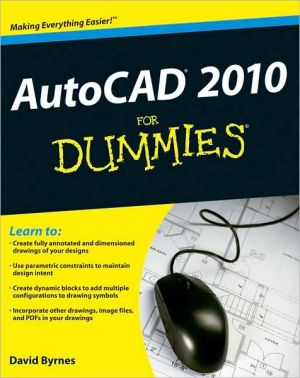

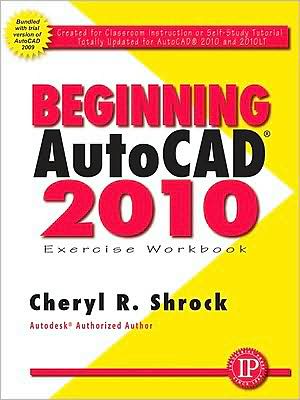
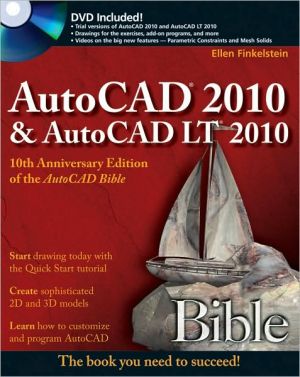
![Mastering AutoCAD 2010 and AutoCAD LT 2010 [With DVD ROM] Mastering AutoCAD 2010 and AutoCAD LT 2010 [With DVD ROM]](/application/data/covers/60/32/9780470466032.jpg)

